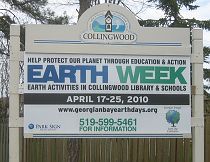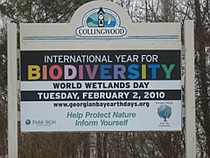Nature and Community Activism
The May 6 headline said it all: Human Society Under Urgent Threat from Loss of Earth’s Natural Life
https://www.theguardian.com/environment/2019/may/06/human-society-under-urgent-threat-loss-earth-natural-life-un-report
Our Earthly inhabitants are at a dangerous crossroads. In 2002, the biologist E.O. Wilson said that humans and the other species on Earth are caught in the bottleneck of an accelerating ecological crisis. Industrial countries have lost their way, without the certain knowledge that we are capable of extracting ourselves or indeed willing to exit this relentless multi-faceted extinction squeeze on species ranging from insects to primates. Within just 150 years they have succeeded in threatening our planet’s viability. If humans won’t acknowledge and actively respond to the dangerous situation we have drifted into, we will sink with the remaining creatures into the quagmire of our making, for without pollinators, soil and seas we are doomed.
The daily scientific news is relentless: unless we change our ways, and soon, climate change will cast an unchangeable veil of greyness across the planet. The U.N. Climate Report last November warned that we have 12 years to drastically reduce our fossil fuel emissions so that global temperatures don’t exceed 1.5 °C. As the respected environmental activist Bill McKibben has stated through his many books, starting with his 1989 treatise The End of Nature, the world is rapidly moving towards “climate chaos”.
On May 6 this year The U.N. Intergovernmental Science-Policy Platform on Biodiversity and Ecosystem Services published its critically important 1,800-page Global Assessment Report. The outlook for us and our fellow Earthlings is becoming progressively bleaker. This fact is well established, but North Americans, and their politicians in particular, behave as if there were no planetary bio-climatic crisis. Québec’s Biodiversity Atlas demonstrates how serious the situation is in southern Québec, but few people know of this document.
Yet one single person can inspire the rest of us to rise to the enormous challenge, “where the voice that is in us makes a true response, where the voice that is great within us rises up”. Last year a schoolgirl named Greta Thunberg did just that, galvanizing her fellow teenagers to find their voices and demand that adults protect them from the ravages of climate change.
After centuries of feeling alienated from Nature, can we find our way back home – our only home? The path is tortuous, but we can focus on a vision that will allow us to succeed. Earthly community is the way forward. The 17th-century English poet John Donne wrote: “No man is an island entire of itself. Every man is a piece of the continent, a part of the main… Any man’s death diminishes me, because I am involved in mankind…” Now we know that our involvement must move to embrace all creatures.
People are finally reacting strongly to government indifference, and speak of the climate and biodiversity crisis as a deeper symptom of our general malaise: increasing social injustice, over-population and capitalism’s mantra for unlimited growth on a finite planet are among the grave concerns that are being voiced. A multitude of global initiatives have gained traction, including the Green New Deal championed by the youth-led Sunrise Movement. The recent 10-day Extinction Rebellion civil disobedience actions across the world shook up British politicians to declare a climate emergency. The student climate strikes here in Canada and globally have been hugely successful in creating a momentum that promises legislative change.
One example of how school and community can become involved in protecting and respecting Nature is Cookshire Elementary School’s transformation last year into a Living School, incorporating Nature into all aspects of learning so that the students and staff can benefit mentally and physically from a connection with the natural world. Dawson College in Montreal is a partner in the initiative, and St. Francis Valley Naturalists’ Club is sponsoring guest lecturers. Representatives from universities have visited the school, which it is hoped will serve as a model for other schools and campuses to follow.
My purpose in writing these articles is to celebrate what is best locally and globally that can bring us together to confront the ‘great thinning’ of our fellow inhabitants on this planet and create a viable community that includes all of us, not just humans. May 22 is International Day for Biological Diversity. Let’s come together to celebrate our interdependence with the rest of Nature.

